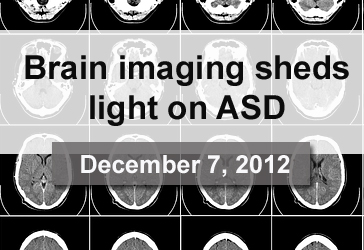Check out other stories from the Latest News
Brain Imaging Checks Functional Network Structure in ASD
By Mark N. Ziats on December 7, 2012

Background: Brain imaging studies of individuals with Autism Spectrum Disorders (ASD) have demonstrated that functional brain networks—combinations of different brain regions working together for a task—are abnormally connected in autism. However, results from these prior studies are often conflicting, and it remains unclear how deficits in functional brain networks relate to known abnormalities in the brain structures of people with ASD.
What’s new: A recent study published in the journal PLoS One assessed the structural relationships of two prominent functional networks that are abnormal in ASD. Researchers used a brain imaging technique called structural covariance magnetic resonance imaging (scMRI), which can track similar variations in grey matter volume across multiple individuals. They compared the structure of brain regions involved in the salience network, known to be involved in emotional processing, and the default mode network, thought to be important for task-independent introspection, between 49 males with ASD and 49 age- and IQ-matched controls.
According to the study, the salience network was underdeveloped in individuals with ASD as compared to controls. In contrast, the default mode network was either over- or under-connected, depending on the brain region assessed.
Why it’s important: This study provides important insight into the relationship between abnormal brain structures and functional networks underlying autistic behaviors. Understanding how variations in the brain relate to functional network modifications is crucial to elucidating the physiological mechanisms that contribute to ASD.
Help me understand :
| Source(s) : |
| Tweet |

